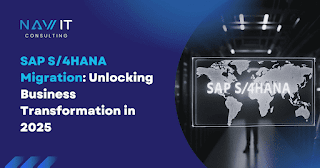Understanding the VSR Optimizer in SAP TM
- Get link
- X
- Other Apps
SAP Transportation Management (SAP TM) is an advanced solution designed to optimize transportation logistics, helping businesses streamline their supply chains, reduce costs, and improve operational efficiency. One of the standout features of SAP TM is the VSR Optimizer (Vehicle Scheduling and Routing Optimizer). This tool is a powerful resource that enables companies to automate and optimize their transportation planning, making it an invaluable asset for transportation professionals. In this article, we will explore the core functions, benefits, and considerations of the VSR Optimizer and how it can drive success in transportation management.
What is the VSR Optimizer in SAP Transportation Management?
The VSR Optimizer is an advanced planning tool integrated within SAP Transportation Management that optimizes vehicle scheduling, routing, and overall fleet management. By analyzing a wide range of variables, such as traffic conditions, weather forecasts, and vehicle capabilities, it recommends the most efficient routes and schedules, thus minimizing transportation costs while enhancing delivery accuracy. The optimizer helps companies maximize their fleet’s potential, ensuring timely deliveries while also reducing fuel consumption and vehicle wear.
Key Features of the VSR Optimizer
Route Optimization: The VSR Optimizer analyzes available routes and traffic data to recommend the most efficient paths for vehicles. By reducing idle time and ensuring smoother travel paths, it minimizes fuel usage and travel time, which lowers costs.
Load Optimization: Proper load distribution is crucial for efficient transport. The VSR Optimizer ensures that vehicles are loaded to their maximum capacity while adhering to weight restrictions, ensuring fewer trips are needed and resources are utilized effectively.
Real-Time Adjustments: The system can dynamically adjust transportation schedules and routes based on real-time changes, such as delays or sudden route blockages, making it highly adaptable to unforeseen circumstances.
Cost Efficiency: By combining route optimization and load planning, the VSR Optimizer helps reduce operational expenses, from fuel to labor costs, ultimately improving the company’s bottom line.
Why is VSR Optimization Essential for Transportation Management?
Transportation is one of the most expensive and critical components of the supply chain. Efficient management is vital for minimizing costs, improving service quality, and staying competitive in today’s market. The VSR Optimizer plays a central role in achieving these goals. Let's examine why VSR optimization is essential:
1. Cost Reduction
Transportation costs can account for a significant portion of operational expenses. The VSR Optimizer helps minimize these costs by suggesting the most fuel-efficient routes, reducing empty miles, and optimizing fleet capacity. This leads to cost savings on fuel, vehicle maintenance, and driver wages.
2. Improved Delivery Times
Late deliveries can damage a company's reputation and lead to dissatisfied customers. The VSR Optimizer ensures timely deliveries by dynamically adjusting schedules based on the most efficient routes and real-time traffic updates, making it a valuable tool for improving service reliability.
3. Environmental Sustainability
Sustainability is a growing concern for many organizations. The VSR Optimizer contributes to greener transportation by optimizing routes and load planning, leading to fewer trips, reduced emissions, and lower environmental impact.
The Impact of Artificial Intelligence on the VSR Optimizer
Artificial intelligence (AI) is the driving force behind the VSR Optimizer’s ability to provide highly accurate, real-time recommendations. AI algorithms process vast amounts of data, including historical traffic patterns, current weather conditions, and vehicle capacities, to provide optimal solutions.
By leveraging machine learning, the VSR Optimizer can predict potential delays or issues, helping businesses proactively adjust transportation plans. For example, if an accident causes a roadblock on a primary route, the AI-based optimizer can suggest an alternative path to avoid delays, ensuring that deliveries continue smoothly.
How the VSR Optimizer Enhances Transportation Efficiency
1. Comprehensive Data Analysis
The VSR Optimizer doesn’t operate in isolation; it pulls in a variety of data points to ensure optimal decision-making. Data sources like historical delivery data, traffic information, and even real-time vehicle location data are considered to create the most effective transportation plans. The optimizer can also account for external factors like weather forecasts to ensure delivery plans are accurate and timely.
2. Predictive Capabilities
The system not only reacts to current conditions but can also predict future ones. For example, if traffic congestion patterns suggest that a route will become heavily congested during peak hours, the VSR Optimizer can proactively adjust the schedule or route to avoid delays. This predictive functionality enables transportation managers to better prepare for changes in the logistics environment.
3. Scalability and Flexibility
Whether you're managing a small fleet or a large, multinational transportation network, the VSR Optimizer can scale to meet your needs. The system adapts to changes in route complexity, number of vehicles, or order volume without compromising performance. This flexibility is key to managing growing transportation needs.
Integrating the VSR Optimizer into SAP TM
SAP TM is a robust platform that provides end-to-end solutions for transportation management, and the VSR Optimizer fits seamlessly within this environment. It enhances the planning and execution stages by automatically optimizing routes and scheduling in real-time. Integration with other SAP modules like SAP S/4HANA or SAP Ariba ensures that all aspects of transportation, from sourcing to invoicing, are covered.
This integration provides a unified view of the entire transportation process, helping businesses make data-driven decisions that align with their overall supply chain strategy. It ensures that inventory management, route planning, and delivery schedules all work in sync, resulting in smoother operations.
The Key Benefits of Using the VSR Optimizer
1. Visibility and Transparency
The VSR Optimizer provides full visibility into transportation activities, allowing managers to track routes, delivery progress, and vehicle performance in real time. This level of transparency helps businesses identify potential bottlenecks and resolve issues quickly.
2. Improved Collaboration
With its integration into SAP TM, the VSR Optimizer helps break down silos within an organization. It ensures that all relevant departments—such as operations, sales, and customer service—have access to up-to-date transportation data, which promotes better collaboration and decision-making.
3. Better Fleet Utilization
Fleet management becomes more efficient with the VSR Optimizer. It ensures that vehicles are optimally utilized, reducing the need for underused or unnecessary vehicles. This leads to better fleet management and reduced operational costs.
4. Regulatory Compliance
Staying compliant with transport regulations is crucial for avoiding fines and penalties. The VSR Optimizer helps ensure that routes and schedules comply with regulations such as driver hours and load restrictions, which keeps the company on the right side of the law.
Challenges in Implementing the VSR Optimizer
Despite its benefits, implementing the VSR Optimizer can come with certain challenges. For instance, businesses must ensure they have accurate and up-to-date data inputs, as the optimizer’s effectiveness relies heavily on the quality of the data it processes. Additionally, employees must be trained to use the system effectively to maximize its potential.
1. Data Quality and Accuracy
The VSR Optimizer’s effectiveness depends on the accuracy of the data it analyzes. If there are discrepancies in route data, vehicle information, or traffic conditions, the optimizer may not provide optimal suggestions, leading to inefficiencies.
2. System Integration
For companies that use multiple systems or legacy platforms, integrating the VSR Optimizer into existing infrastructure can be complex. This process requires careful planning and resources to ensure that all systems work harmoniously.
3. Training and Skill Development
While the VSR Optimizer offers advanced features, ensuring that employees understand how to use the tool effectively is critical. Organizations must invest in training their teams to navigate the system and harness its full potential.
Best Practices for Maximizing the Value of the VSR Optimizer
To get the most out of the VSR Optimizer, here are some best practices:
- Ensure Data Accuracy: Make sure your data inputs are current and reliable to ensure optimal recommendations from the optimizer.
- Leverage Predictive Analytics: Use the system’s predictive capabilities to prepare for potential disruptions and optimize transportation plans proactively.
- Train Your Team Regularly: Regularly update your staff’s training to keep them informed of new features and best practices.
- Monitor Performance Metrics: Continuously track performance metrics, such as on-time delivery and cost savings, to evaluate the effectiveness of the optimizer.
Conclusion
The VSR Optimizer in SAP Transportation Management provides a sophisticated, data-driven approach to improving transportation logistics. By optimizing routes, schedules, and fleet utilization, businesses can achieve significant cost savings, improve delivery times, and enhance customer satisfaction. However, successful implementation requires careful attention to data accuracy, system integration, and employee training. By overcoming these challenges, organizations can unlock the full potential of the VSR Optimizer and position themselves for greater success in the competitive field of transportation management.
- Get link
- X
- Other Apps


Comments
Post a Comment